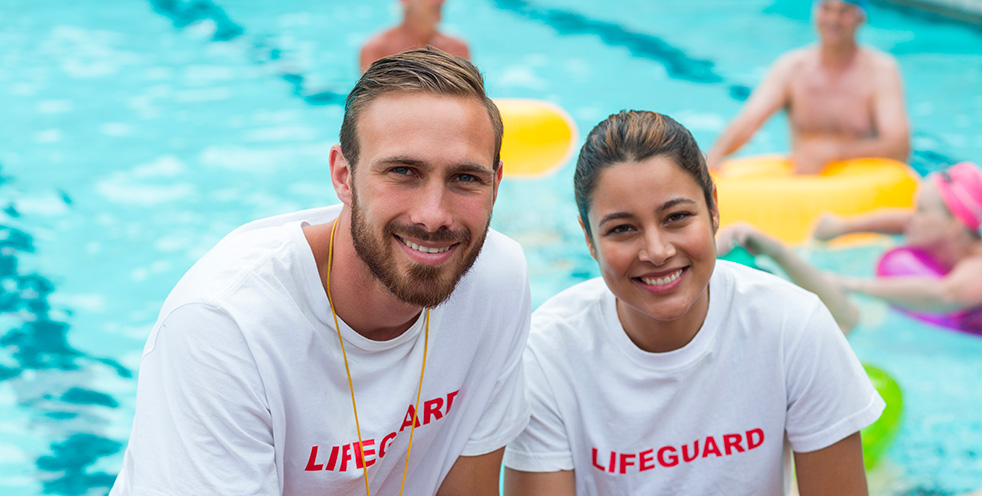Lifeguard training is a comprehensive program designed to prepare individuals to handle emergency situations and ensure safety in aquatic environments. At American Lifeguard USA, our training programs cover a wide array of topics, equipping participants with the skills and knowledge needed to excel as lifeguards. This article provides a detailed look at the essential topics covered in lifeguard training, highlighting the importance of each component in preparing lifeguards to effectively respond to various scenarios.
1. Introduction to Lifeguarding
The training begins with an introduction to the role of a lifeguard, including the fundamental responsibilities and expectations. Participants learn about the importance of vigilance, proactive surveillance, and the critical role lifeguards play in preventing accidents and saving lives. This section also covers the legal and ethical considerations of lifeguarding, emphasizing the lifeguard’s duty of care and the importance of adhering to established protocols.
2. Understanding Aquatic Environments
Lifeguards must have a solid understanding of the aquatic environments they are responsible for. This includes learning about different types of water bodies such as pools, lakes, and oceans, as well as their unique hazards. Training covers topics such as water chemistry, recognizing and managing environmental risks (e.g., rip currents, waves), and understanding the impact of weather conditions on water safety.
3. Emergency Response Procedures
Emergency response is a critical component of lifeguard training. Participants are taught how to respond to a variety of emergency situations, including drowning, cardiac arrest, and spinal injuries. This section covers the following key areas:
Rescue Techniques: Lifeguards learn various rescue techniques, including reaching assists, throw rescues, and in-water rescues. Techniques are practiced through simulations and drills to ensure lifeguards can perform them efficiently and effectively.
CPR and First Aid: Cardiopulmonary resuscitation (CPR) and first aid are essential skills for lifeguards. Training includes both adult and child CPR, as well as techniques for handling choking, bleeding, and other medical emergencies. Lifeguards are also taught how to use automated external defibrillators (AEDs) and administer basic first aid.
Emergency Action Plans: Participants learn how to develop and implement emergency action plans, including how to coordinate with other responders, manage crowds, and communicate effectively during emergencies. This includes practicing drills and exercises to reinforce these skills.
4. Preventive Measures and Risk Management
Preventive measures are crucial for reducing the likelihood of accidents and emergencies. Lifeguard training emphasizes the importance of risk management and proactive safety measures, including:
Surveillance Techniques: Lifeguards are trained in effective surveillance techniques to monitor and assess swimmer behavior, identify potential hazards, and prevent accidents. This includes understanding the principles of scanning, zone coverage, and maintaining situational awareness.
Enforcement of Rules and Regulations: Lifeguards learn how to enforce pool or beach rules and regulations to promote safety. This includes addressing unsafe behavior, providing safety education to patrons, and managing conflicts.
Injury Prevention: Training covers strategies for preventing injuries, such as recognizing and addressing potential hazards, educating swimmers on safe practices, and maintaining a clean and well-maintained facility.
5. Physical Fitness and Skills
Physical fitness is a crucial aspect of lifeguarding. Lifeguards must be in good physical condition to perform rescues and respond to emergencies effectively. Training includes:
Swim Tests and Conditioning: Lifeguards undergo swim tests to assess their swimming ability and endurance. Conditioning exercises and drills are designed to enhance strength, stamina, and overall fitness.
Skills Practice: Lifeguards practice various skills, including deep-water rescues, treading water, and swimming with equipment. These skills are essential for responding to emergencies and performing rescues effectively.
6. Communication and Teamwork
Effective communication and teamwork are vital for successful lifeguarding. Training covers:
Communication Skills: Lifeguards are trained in clear and concise communication techniques, including how to relay information to patrons, colleagues, and emergency responders. This includes verbal communication, hand signals, and using communication equipment.
Team Coordination: Lifeguards learn how to work as part of a team, coordinating with other lifeguards and facility staff during emergencies. Teamwork drills and exercises help reinforce the importance of collaboration and effective coordination.
7. Record Keeping and Documentation
Accurate record-keeping and documentation are essential for managing incidents and ensuring compliance with safety regulations. Lifeguard training includes:
Incident Reporting: Lifeguards learn how to document incidents accurately, including details of the emergency, actions taken, and outcomes. This documentation is crucial for legal purposes and improving safety protocols.
Daily Checks and Reports: Training covers the importance of conducting daily checks of equipment, facilities, and safety systems, as well as maintaining logs and reports to track safety and maintenance issues.
8. Lifeguard Certification and Recertification
Upon completing the training, participants undergo a lifeguard certification process to validate their skills and knowledge. This includes written exams, practical assessments, and skills demonstrations. Lifeguards must also stay current with their certification through periodic recertification courses, which cover updates to techniques, protocols, and regulations.
Conclusion
Lifeguard training at American Lifeguard USA is a comprehensive program designed to equip individuals with the skills and knowledge necessary to excel in the role of a lifeguard. By covering topics such as emergency response, preventive measures, physical fitness, and communication, the training ensures that lifeguards are well-prepared to handle a variety of situations and promote safety in aquatic environments. Whether you are new to lifeguarding or seeking recertification, our training programs provide the tools and expertise needed to make a positive impact and ensure the safety of swimmers and patrons.

